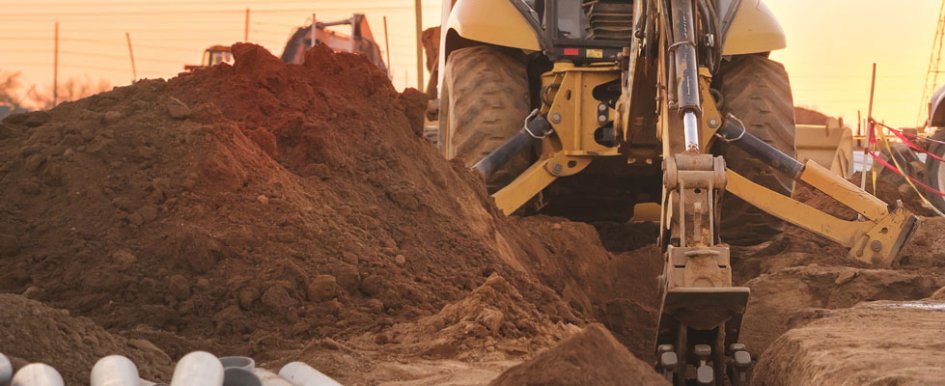
Rental equipment has become an essential part of the construction industry, now making up more than 55% of contractor equipment fleets.
In today’s construction environment, many business owners choose to supplement their existing equipment fleet with rental machines, lowering overhead costs while increasing the ability to adjust to changing jobsite demands. As the reliance on rental equipment continues to grow, it is increasingly important to get the most from the rental experience. How can construction business owners maximize rental equipment to boost productivity and the bottom line?
1. Adjust Equipment Fleet for Shifting Project Needs
It goes without saying that the COVID-19 pandemic changed construction job schedules and the types of projects that companies perform. As the industry continues to shift and adjust to new challenges and different opportunities, rental equipment remains a viable solution for project managers focused on staying on schedule and on budget.
Shorter project lead time and growing concerns about supply chain interruptions require flexibility to adapt. Adding rental equipment to your fleet provides you with the machines needed to keep working without stretching finances to permanently acquire equipment. It’s all about having the right tools at the right time, including specialized equipment that may not be necessary on a standard job or that is only needed for a limited time period.
2. Keep Costs in Check
Managing machine inventory with rental equipment can keep costs in check and minimize or eliminate extra considerations and expenses of owning equipment, such as maintenance, repairs, logistics, transportation and staffing CDL drivers and trained mechanics.
Contractors are not responsible for the maintenance or normal wear and tear repair costs that may typically be incurred throughout the use of a rental machine. If a rental machine requires scheduled maintenance, the rental provider can switch it out with another machine without disrupting productivity.
When a machine is no longer needed, you can return the rental and there are no more costs associated with it, unlike an owned machine which is still costing money even when it‘s not being utilized
on a job.
3. Benefit From Advanced Features, Safety & Regulations
Every project is different and so are the equipment needs at various stages of a job. Equipment selection at any phase can affect overall productivity and project success. Rental equipment allows contractors to stay current with machine trends, such as battery-powered machines without taking on the cost of turning over a fleet. Rental fleets often include younger models of equipment with newer technology and features often intended to improve safety, efficiency and productivity. Selecting specialized equipment through rental inventory helps construction business owners satisfy industry regulations without having to understand all the various complexities and associated upfront costs.
The rental provider is the expert in staying updated on new features and understanding the capabilities of the equipment in the yard. A skid-steer loader may appear to meet the job specs of an indoor demolition but the rental of a battery-powered mini excavator with remote control option will improve safety and boost productivity.
4. Manage Rental Rates
Equipment rental is not just about sourcing equipment to fill gaps in a fleet; rental providers can offer smart equipment solutions to help ensure project success. After all, the health of the equipment rental industry depends on the health and success of contractors.
Rental rates are fairly standard with cost being determined per day, per week or per month. Rate cliffs are often applied to make longer rental periods more attractive. A common example of a rental rate cliff is a 2- to 4-day rental at the same price as a 7-day week, or a 2- to 3.5-week rental at the same rate as a month long rental and so on. Some rental providers are adopting new practices in negotiating rental pricing. One such new practice gaining traction in the rental industry is to offer discounts for returning equipment before the rental period expires and is no longer needed at a jobsite — idle equipment isn’t ideal for contractors or rental suppliers. Another beneficial trend is flexibly arranging to exchange certain attachments or types of equipment at a jobsite as part of a rental agreement. For instance, an electric concrete breaker could be exchanged for a jumping jack tamper without the need for a new agreement or rental terms.
Communication is key to come to agreeable terms for both parties. Understanding out-the-door cost and not just the machine rental rate is important, this includes delivery, fuel, waivers and protection plans. It’s important for contractors to understand waivers and protection plans but also let rental providers know what business insurance is already in place.
5. Plan for the Future
Construction rental equipment continues to comprise a larger portion of a contractor’s equipment fleet. As this shift toward more rental continues, it allows construction business owners to control costs, become more adaptable to different types of jobs, and stay current with industry demands and regulations.
Understanding how rental equipment fits into a comprehensive fleet strategy is critical for keeping a business going strong.
